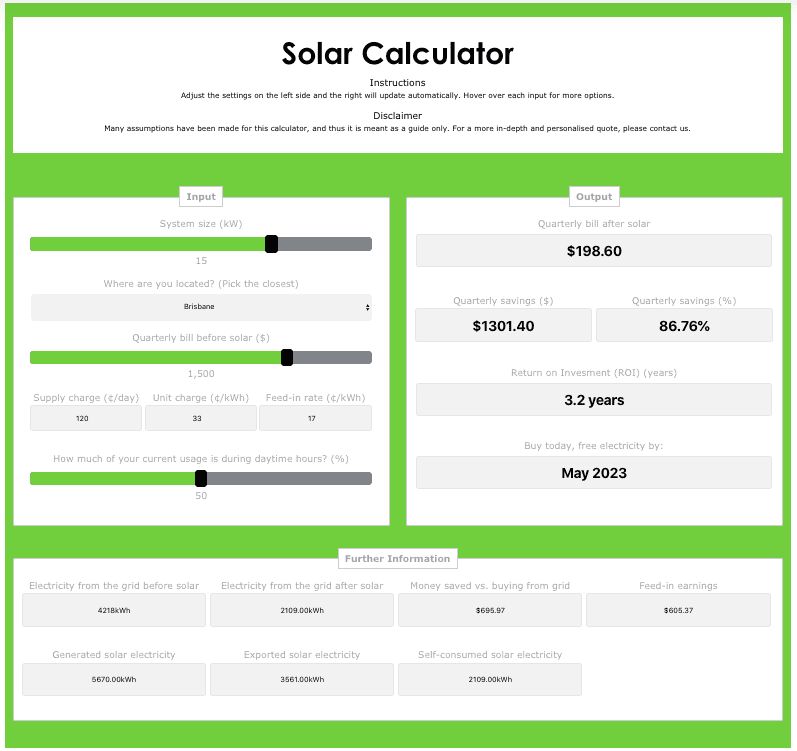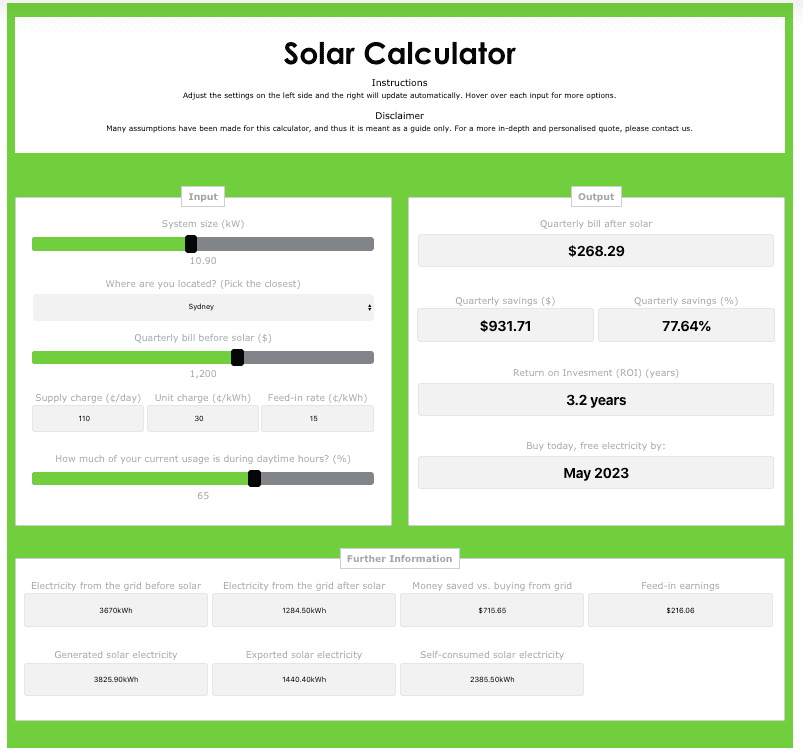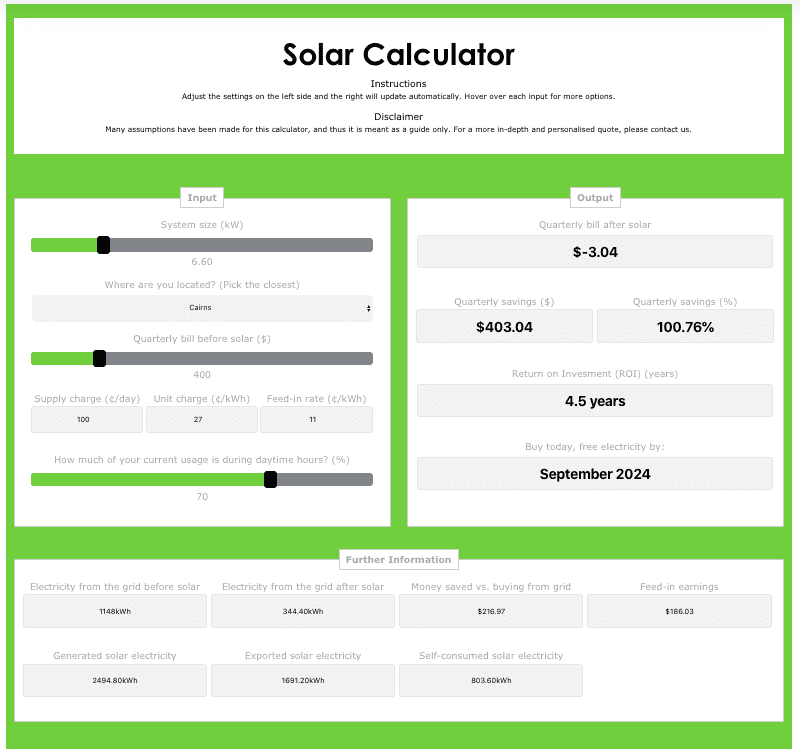There are many questions when looking at investing in your own PV power plant, the most common relating to system size and payback periods (ROI):
- Should I maximise my roof space (big system) or should I minimise my initial spend (small system)?
- Will it take me more or less time to pay off a small system?
- What size system do I need to be in credit on my energy bill?
These require a bunch of calculations, taking into account energy production, energy consumption, and energy prices.
To get you started, James, our in-house electrical engineer, has created this calculator. Of course, this is only a rough calculator based on several assumptions, so for a free, customised, detailed energy assessment, please contact us on 1300 876 269.
You can find our new tool here:
For further qualification, we have explained some terms below and listed four common house arrangements.
System size (kW):
Popular residential system sizes are 6.6kW, 7.8kW, and 10.9kW. Depending on your roof space, shading and power usage, you can choose between a 3kW to 15kW system. Simply move the bar into the left or right direction.
If you live in a house that has a small roof space and you are not using a lot of electricity during the day, we would recommend to choose a small to medium system size.
If you live in a house that has a medium to large roof space with no shading issues, and you are using a lot of power during sunlight hours, we would recommend to choose a medium to large system size.
Supply charge (c/day), Unit charge (c/kWh):
These numbers can be found on your power bill and will differ depending on your energy provider and your location.
Simply place your mouse into the box and type the rates from your power bill into the boxes.
Feed-in rate (c/kWh):
This is the credit received for energy returned to the grid when solar is installed.
You can compare rates online or simply give us a call 1300 876 269.
The feed-in-rate (FIT) will differ depending on your energy provider and your location.
Common feed-in-rates within Australia:
Brisbane: 7c – 17c
North QLD: 7.8c
NSW: 7c – 21c
Melbourne: 9.9c – 18c
Adelaide: 10c- 18c
Perth: 7c
Common house arrangements
House share with five tenants
Firstly, we have a house share arrangement in Brisbane that has five tenants, all with different schedules.
The house has a large roof space and no shading issues. Power is used during the day and at night.

Reducing the quarterly power bill from $1500 to $198.60 is an enormous saving. Furthermore, the system would be paid off after only 3.2 years.
If you live in a house arrangement similar to this, click here to find out how much money you could save with solar energy.
Couple
Our second scenario is a couple in the suburbs of Sydney that is partly working from home. The electricity bill is higher than the average, hence solar is a great decision to drastically reduce costs as well as reduce dependency on the grid.

As shown above, the couple would have paid off their system after already 3.2 years and would decrease their electricity bill by 77.64% with solar energy.
If you live in a house arrangement similar to this, click here to find out how much money you could save with solar energy.
Retirees
Thirdly, we picture a retired couple that is living in a small town house up in Cairns and uses 70% of power during sunlight hours.

Due to a low electricity bill before going solar, the couple would have a quarterly saving of 100.76%, which means power bills after solar has been installed will be in credit.
If you live in a house arrangement similar to this, click here to find out how much money you could save with solar energy.
Family of four
For our last scenario, we have a family of four living in an averaged size Queenslander home. On weekdays, the household is not at home from 8am until 3pm, which means there is little active power usage during this time. However, their weekend daytime usage is significantly higher.

There are a few possibilities to improve the return on investment:
- Use appliances such as washing machines and dishwashers during solar energy hours with delay functions;
- Set hot water systems and/or swimming pool pumps on a timer, or do so automagically using a Powerdiverter;
- Put air-conditioning on a timer in the mid-afternoon to bring the temperate down to the right level so you can switch off in the evening;
- Utilise slow cookers so you can cook meals throughout the day powered and flavoured by the sun;
- Recharge mobile devices, laptop and other technology devices during the day and unplug them in the evening.
If you live in a house arrangement similar to this, click here to find out how much money you could save with solar energy.










